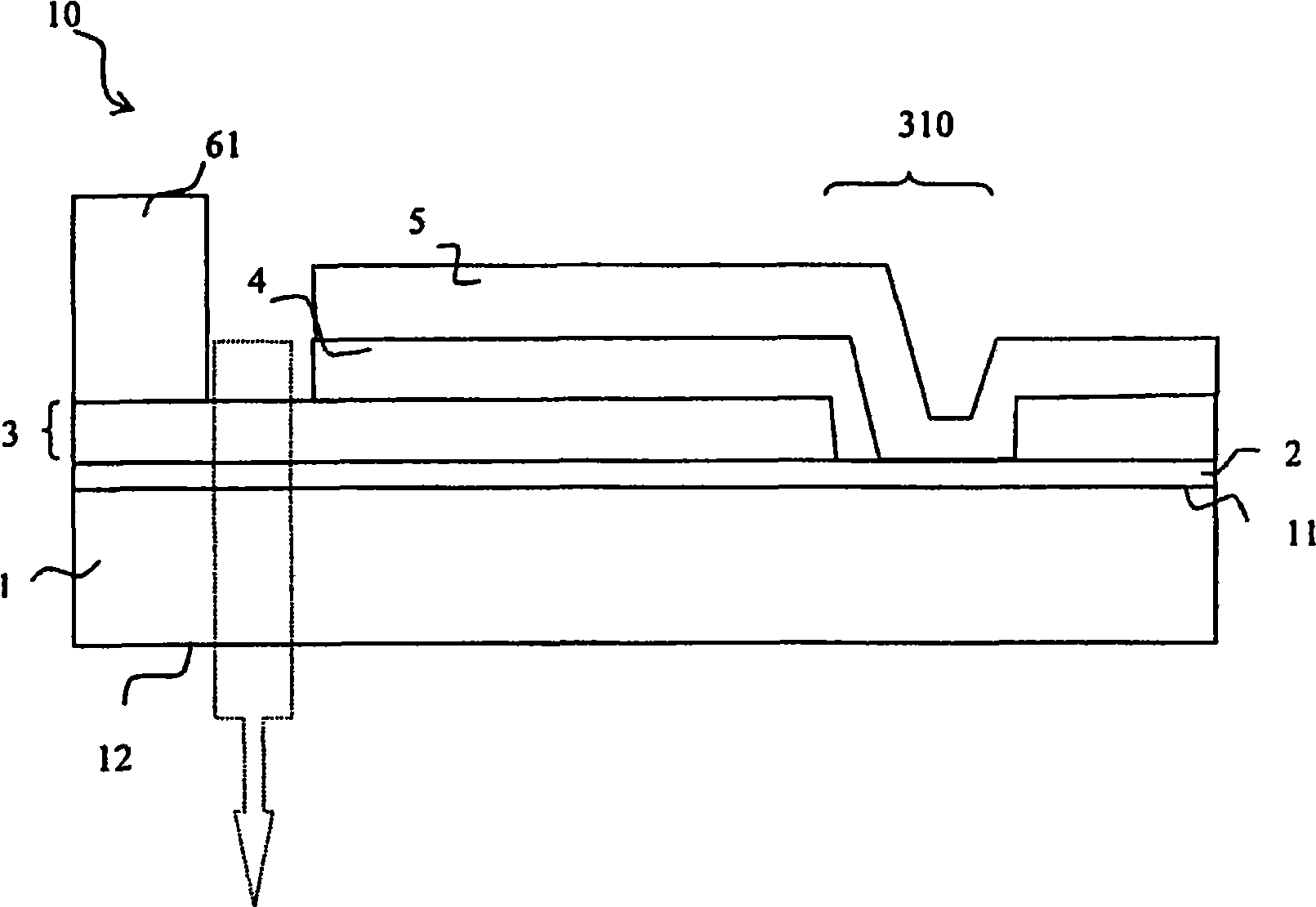Substrate for an organic light-emitting device, use and process for manufacturing this substrate, and organic light-emitting device
A technology for organic light-emitting devices and substrates, which can be used in electroluminescent light sources, lighting devices, optics, etc., and can solve the problems of increased surface roughness and decreased transparency.
- Summary
- Abstract
- Description
- Claims
- Application Information
AI Technical Summary
Problems solved by technology
Method used
Image
Examples
Embodiment 5
[0249] Example 5 constructs an optimized example compared to the relative-example, ie, Example 6, which has a TCO (ITO) electrode. It can be seen from the above table that the sheet resistance, roughness, performance and life characteristics of Example 5 are better than that of Example 6.
[0250] In Example 7, the coated substrate can be used as a transparent / reflective electrode because the T of the coated substrate L / R L The ratio is 0.2, which is between 0.1-0.7. In addition, the light transmission of the coated substrate is less than 50%, therefore, it cannot be used to prepare transparent electrodes, but it can be used to prepare reflective electrodes because of its light reflection is greater than 70%.
[0251] The first electrode may or may substantially be a reflective electrode.
[0252] The bottom electrode 3 extends along one side of the substrate 1 . Thus, immediately above the edge of the cover layer 34 there is a first metallic current source strip 61, pref...
PUM
| Property | Measurement | Unit |
|---|---|---|
| Thickness | aaaaa | aaaaa |
| Roughness | aaaaa | aaaaa |
| Thickness | aaaaa | aaaaa |
Abstract
Description
Claims
Application Information
 Login to View More
Login to View More - R&D
- Intellectual Property
- Life Sciences
- Materials
- Tech Scout
- Unparalleled Data Quality
- Higher Quality Content
- 60% Fewer Hallucinations
Browse by: Latest US Patents, China's latest patents, Technical Efficacy Thesaurus, Application Domain, Technology Topic, Popular Technical Reports.
© 2025 PatSnap. All rights reserved.Legal|Privacy policy|Modern Slavery Act Transparency Statement|Sitemap|About US| Contact US: help@patsnap.com



